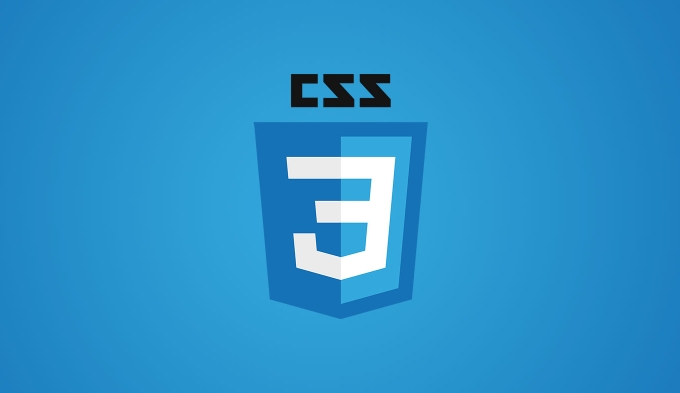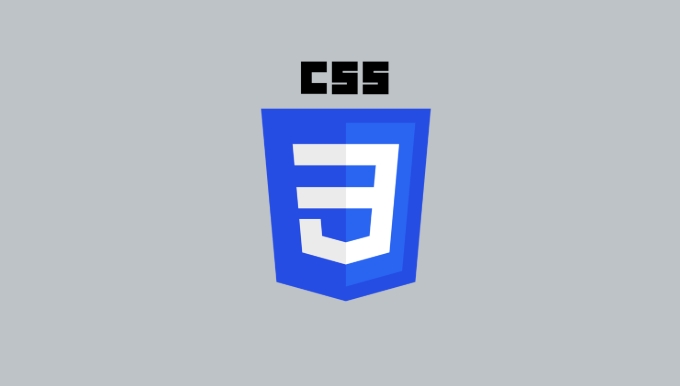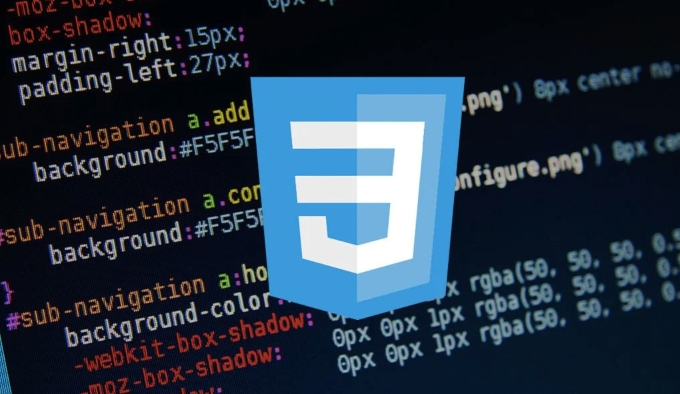To achieve a good-looking and practical card layout, you can follow the following steps: 1. Use Flexbox to quickly build a responsive container, set display: flex, flex-wrap: wrap and gap to control arrangement and spacing; 2. Beautify the card style by setting max-width, box-shadow, padding and other attributes; 3. Use CSS Grid to achieve more complex typesetting, such as automatic filling of columns and responsive column width; 4. Pay attention to responsive common problems such as image size, text wrapping, and spacing consistency. These methods can effectively improve the aesthetics and adaptability of the layout.

When designing web pages, using CSS to make card layout is a very common requirement. Whether it is product display, article list or user information display, card layout can make the content clearer and more organized. This article will directly talk about the key points: how to use CSS to achieve a good-looking and practical card layout.

1. Quickly build card containers with Flexbox
Flexbox is one of the most common ways to implement responsive card layouts. It is simple and flexible and suits most basic layout needs.

How to do it?
- Set
display: flexfor parent container - You can use the
gapattribute to set the spacing (recommended, more convenient than margin) - Use
flex-wrap: wrap
.card-container {
display: flex;
flex-wrap: wrap;
gap: 20px;
}After writing this way, the cards will be automatically arranged in a row, and will automatically wrap when there is insufficient space, which is very suitable for adaptation of different screen sizes.

2. Basic structure and beautification of card style
Each card itself also requires some basic style to improve visual effects and readability.
The suggestions include the following points:
- Set fixed width or maximum width (such as
max-width: 300px) - Add borders or shadows to increase three-dimensionality (
box-shadow) - Use
paddingfor internal blank space - Don't be too colorful in the background, keep the overall coordination
Example:
.card {
background-color: #fff;
border-radius: 8px;
box-shadow: 0 4px 8px rgba(0,0,0,0.1);
padding: 16px;
max-width: 300px;
}These small details make the card look more professional and easier to attract users' attention.
3. Achieve more complex layouts in conjunction with Grid layout
If you need to control the number of columns, alignment, or want to do a waterfall flow effect like Pinterest, you can consider using CSS Grid.
Let's give a simple example:
.card-container {
display: grid;
grid-template-columns: repeat(auto-fill, minmax(250px, 1fr));
gap: 20px;
}The meaning of this code is: automatically fill the columns, each column has a minimum of 250px, and the maximum full available space. This approach is very practical in responsive design and can adapt to different screens without additional writing media queries.
4. Pay attention to common problems in responsive design
While both Flex and Grid support responsiveness well, there are some places that are easily overlooked:
- Image size is out of control : add
max-width: 100%to the pictures in the card to avoid overflow - Text wrapping is not beautiful : long words may spread the card, adding
word-break: break-wordis helpful - Inconsistent spacing : Especially on mobile terminals, remember to check whether
gapis effective. Sometimes old devices do not support it.
If you encounter a problem of card height inconsistent, Grid is better suited to solve this problem than Flex because the contour alignment of Flex is not very flexible.
Basically that's it. Use Flex or Grid well and match the appropriate style details, and you can create a card layout that looks good and practical. It is not complicated, but pay more attention to the details and the effect will be better.
The above is the detailed content of CSS tutorial for creating a card layout. For more information, please follow other related articles on the PHP Chinese website!

Hot AI Tools

Undress AI Tool
Undress images for free

Undresser.AI Undress
AI-powered app for creating realistic nude photos

AI Clothes Remover
Online AI tool for removing clothes from photos.

Clothoff.io
AI clothes remover

Video Face Swap
Swap faces in any video effortlessly with our completely free AI face swap tool!

Hot Article

Hot Tools

Notepad++7.3.1
Easy-to-use and free code editor

SublimeText3 Chinese version
Chinese version, very easy to use

Zend Studio 13.0.1
Powerful PHP integrated development environment

Dreamweaver CS6
Visual web development tools

SublimeText3 Mac version
God-level code editing software (SublimeText3)
 CSS tutorial for creating loading spinners and animations
Jul 07, 2025 am 12:07 AM
CSS tutorial for creating loading spinners and animations
Jul 07, 2025 am 12:07 AM
There are three ways to create a CSS loading rotator: 1. Use the basic rotator of borders to achieve simple animation through HTML and CSS; 2. Use a custom rotator of multiple points to achieve the jump effect through different delay times; 3. Add a rotator in the button and switch classes through JavaScript to display the loading status. Each approach emphasizes the importance of design details such as color, size, accessibility and performance optimization to enhance the user experience.
 Addressing CSS Browser Compatibility issues and prefixes
Jul 07, 2025 am 01:44 AM
Addressing CSS Browser Compatibility issues and prefixes
Jul 07, 2025 am 01:44 AM
To deal with CSS browser compatibility and prefix issues, you need to understand the differences in browser support and use vendor prefixes reasonably. 1. Understand common problems such as Flexbox and Grid support, position:sticky invalid, and animation performance is different; 2. Check CanIuse confirmation feature support status; 3. Correctly use -webkit-, -moz-, -ms-, -o- and other manufacturer prefixes; 4. It is recommended to use Autoprefixer to automatically add prefixes; 5. Install PostCSS and configure browserslist to specify the target browser; 6. Automatically handle compatibility during construction; 7. Modernizr detection features can be used for old projects; 8. No need to pursue consistency of all browsers,
 What is the difference between display: inline, display: block, and display: inline-block?
Jul 11, 2025 am 03:25 AM
What is the difference between display: inline, display: block, and display: inline-block?
Jul 11, 2025 am 03:25 AM
Themaindifferencesbetweendisplay:inline,block,andinline-blockinHTML/CSSarelayoutbehavior,spaceusage,andstylingcontrol.1.Inlineelementsflowwithtext,don’tstartonnewlines,ignorewidth/height,andonlyapplyhorizontalpadding/margins—idealforinlinetextstyling
 Styling visited links differently with CSS
Jul 11, 2025 am 03:26 AM
Styling visited links differently with CSS
Jul 11, 2025 am 03:26 AM
Setting the style of links you have visited can improve the user experience, especially in content-intensive websites to help users navigate better. 1. Use CSS's: visited pseudo-class to define the style of the visited link, such as color changes; 2. Note that the browser only allows modification of some attributes due to privacy restrictions; 3. The color selection should be coordinated with the overall style to avoid abruptness; 4. The mobile terminal may not display this effect, and it is recommended to combine it with other visual prompts such as icon auxiliary logos.
 Creating custom shapes with css clip-path
Jul 09, 2025 am 01:29 AM
Creating custom shapes with css clip-path
Jul 09, 2025 am 01:29 AM
Use the clip-path attribute of CSS to crop elements into custom shapes, such as triangles, circular notches, polygons, etc., without relying on pictures or SVGs. Its advantages include: 1. Supports a variety of basic shapes such as circle, ellipse, polygon, etc.; 2. Responsive adjustment and adaptable to mobile terminals; 3. Easy to animation, and can be combined with hover or JavaScript to achieve dynamic effects; 4. It does not affect the layout flow, and only crops the display area. Common usages are such as circular clip-path:circle (50pxatcenter) and triangle clip-path:polygon (50%0%, 100 0%, 0 0%). Notice
 How to create responsive images using CSS?
Jul 15, 2025 am 01:10 AM
How to create responsive images using CSS?
Jul 15, 2025 am 01:10 AM
To create responsive images using CSS, it can be mainly achieved through the following methods: 1. Use max-width:100% and height:auto to allow the image to adapt to the container width while maintaining the proportion; 2. Use HTML's srcset and sizes attributes to intelligently load the image sources adapted to different screens; 3. Use object-fit and object-position to control image cropping and focus display. Together, these methods ensure that the images are presented clearly and beautifully on different devices.
 What are common CSS browser inconsistencies?
Jul 26, 2025 am 07:04 AM
What are common CSS browser inconsistencies?
Jul 26, 2025 am 07:04 AM
Different browsers have differences in CSS parsing, resulting in inconsistent display effects, mainly including the default style difference, box model calculation method, Flexbox and Grid layout support level, and inconsistent behavior of certain CSS attributes. 1. The default style processing is inconsistent. The solution is to use CSSReset or Normalize.css to unify the initial style; 2. The box model calculation method of the old version of IE is different. It is recommended to use box-sizing:border-box in a unified manner; 3. Flexbox and Grid perform differently in edge cases or in old versions. More tests and use Autoprefixer; 4. Some CSS attribute behaviors are inconsistent. CanIuse must be consulted and downgraded.
 Demystifying CSS Units: px, em, rem, vw, vh comparisons
Jul 08, 2025 am 02:16 AM
Demystifying CSS Units: px, em, rem, vw, vh comparisons
Jul 08, 2025 am 02:16 AM
The choice of CSS units depends on design requirements and responsive requirements. 1.px is used for fixed size, suitable for precise control but lack of elasticity; 2.em is a relative unit, which is easily caused by the influence of the parent element, while rem is more stable based on the root element and is suitable for global scaling; 3.vw/vh is based on the viewport size, suitable for responsive design, but attention should be paid to the performance under extreme screens; 4. When choosing, it should be determined based on whether responsive adjustments, element hierarchy relationships and viewport dependence. Reasonable use can improve layout flexibility and maintenance.






